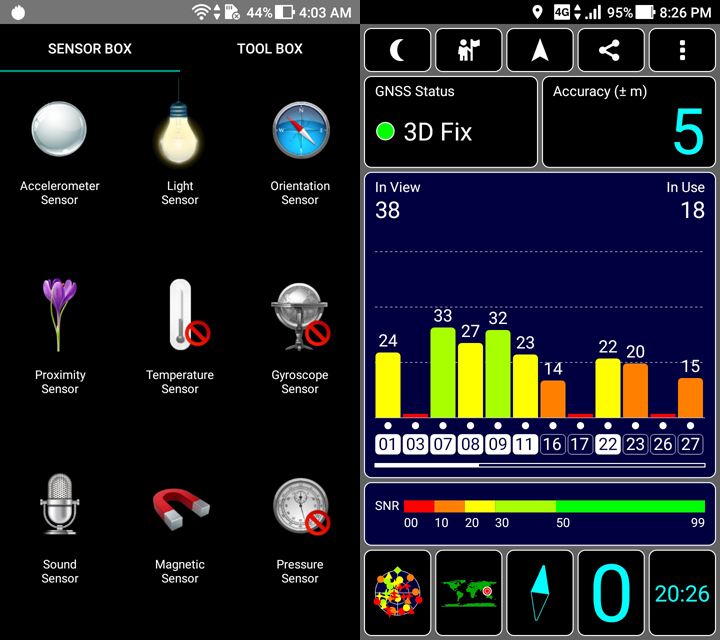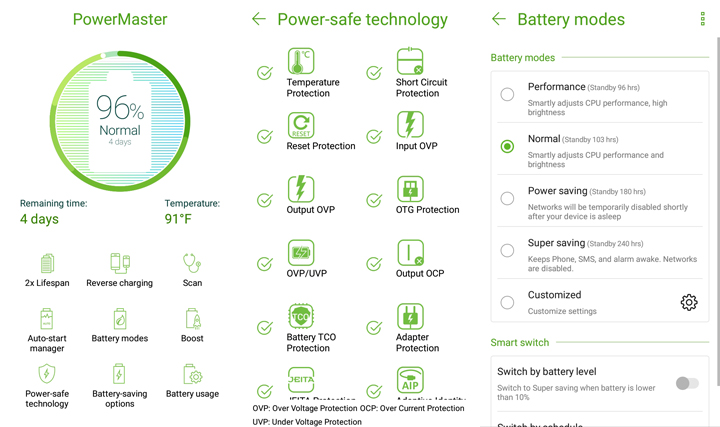ASUS released another variant to their Zenfone 4 Max line this year but with a more affordable price tag — the Zenfone 4 Max Lite. It’s a toned-down version of the Zenfone 4 Max but still equipped with a massive 4,100mAh battery. Is it worth the purchase? Let’s find out in our full review!

Before we proceed with our review, you might want to check out our unboxing and hands-on video below:
Table of Contents
The Zenfone 4 Max Lite has the same design as the Zenfone 4 Max but with some adjustments. the front LED flash is now placed on the left side instead of on the rightmost area. It also lost the visible screws at the bottom. At first glance, it’s still the same smartphone that we praised for its sleek and premium look, however, we find the extra bezels above the screen a little less pleasing.
In front, the LED flash, call speaker, and 8MP front camera are sitting on top of the 5.2-inch screen display. While its capacitive buttons, along with a home button that doubles as a fingerprint scanner, are down below.
On its left is where the lone SIM card tray with the dual nano-SIM card slots and dedicated microSD card slot (expandable up to 256GB) are placed. The power button and volume keys are located on the right.
At the bottom, are two speaker grilles that are actually the microphone (left) and the loudspeaker (right) while the micro-USB port is found in between.

Flipping it on its back will show the 13MP + 5MP dual rear cameras with the LED flash and the ASUS logo at the center.

The device feels solid, light, and thin due to its 156g weight and 8.8mm thickness. Thanks to its metal unibody design, 2.5D curved glass, and curved edges it feels smooth, cool, and seamless to the touch.

The Zenfone 4 Max Lite has a 5.2-inch screen with 1280 x 720 resolution that equates to 282ppi. For its price range, we were somehow disappointed but it’s understandable given that the display is not the device’s strong suit.

Watching videos, playing games, browsing online, and other daily activities won’t be a problem since it has decent color accuracy. Viewing angles are also good and when used under direct sunlight, the brightness is high enough for the display to be visible and operable. Although, for users who are sensitive to screen resolutions, this may not be the smartphone for you.
The sound quality of the device is crisp and clear. However, there’s not much bass and it’s not loud enough to be heard in an open area even at max volume. We advise that users use the included earphones in the package since it provides good highs and lows.
The phone runs on ZenUI 4.0 on top of Android 7.1.1. Last year, ASUS announced that they’ll be removing bloatware applications in their latest ZenUI and they did not disappoint because it now looks cleaner and simpler.

The remaining pre-installed applications include the usual Google apps, ASUS apps (service center, community, etc…), social media apps (Facebook, Instagram, Messenger), and Mobile Manager. Out of the 16GB internal storage, users are left with 8.27GB free which is almost half of what was initially given. Good thing memory can be expanded up to 256GB via the dedicated microSD card slot and USB OTG.
The device, just like the Zenfone 4 Max, has the same 13MP (main) + 5MP (wide-angle) rear cameras and an 8MP front camera. We appreciate that ASUS did not compromise the phone’s cameras. Let’s move on to quality.
First off, the rear cameras. For features, they have Beauty, Super-Resolution, Panorama, Pro, GIF, and Time-Lapse modes. Under the Pro mode, users can adjust the shutter speed from 1/40000 to 1/3 and the ISO from 50 to 3200. For our sample shots, we only used auto to show users the raw quality of the images. The auto-focus of the cameras are fast and quickly adjusts to the lighting of the environment. Images produced are color accurate and decent enough for social media posts. Under low-light conditions, it does not perform well since it shows visible noises and blurs. We also had to manually press the screen for the camera to focus properly. Here are the sample photos that we took.
As for the 8MP front camera, it has 4 modes: Auto, Selfie Panorama, Beauty, and GIF. There’s also the Beauty Live mode under the Selfie Master application that users can use for further selfie customization. The images that were produced are slightly grainy but decent and well. Sadly, there’s nothing exceptional about its quality.
The device can record videos up to 1080p in 30fps. Quality is decent but with noticeable pulsating feel due to its auto-focus trying to catch up with the movement of the environment (see sample video). Lens switching is unavailable, so if users want to use the wide-angle lens instead of the main one, they’ll have to record a new video again.
The Zenfone 4 Max Lite sports a 1.4GHz Qualcomm Snapdragon 425 quad-core processor with Adreno 308 GPU and 2GB RAM. Though it would’ve been better if ASUS used the Snapdragon 430, to level with competitors at this price point who are using the same or even better processors. Regardless, performance is snappy and responsive although we did notice some lags whenever we try to multi-task. See benchmarks below.

Note: PCMark and 3DMark crashed mid-way during testing.
The device can run games such as Sky Dancer and Rules of Survival decently, but with occasional frame drops. It can handle games with moderate-graphics well but do not expect much from it. It also warms up upon playing for prolonged sessions but not to alarming levels.

The Zenfone 4 Max Lite covers basic connectivity such as LTE, WiFi, Bluetooth, and GPS. The SIM 1 slot can use mobile data up to 4G connection but the SIM 2 can only do up to H+ (3G). The sensors that are lacking on the device are Temperature, Gyroscope, and Pressure which is alright unless users want to play games such as Pokemon Go or use VR applications.

We did not have any problems when receiving or making calls on the device since the connection was not interrupted and call quality is loud and clear on our end. GPS is also pretty accurate and on point.
This is the bread and butter of every Zenfone Max device. As for the Zenfone 4 Max Lite, it runs on a 4,100mAh battery which is big for its price range.

Testing it out on PC Mark’s battery life test, the device lasted for 14 hours and 14 minutes which is above average for an entry-level smartphone. Upon testing it in our video loop test (1080p video with 50% brightness and sound), it lasted for 18 hours and 30 minutes. The battery of the Zenfone 4 Max Lite outlasted the Zenfone 4 Max by 2 hours which means that the device is a great pick for users who prioritize battery life more over any other key aspects.

The long battery life of the device can be attributed to its screen resolution and size, OS, and its PowerMaster feature which optimizes battery usage. Lastly, the device does not support fast charging so it took us around 2 hours and 30 minutes to fully charge it.
For a battery-centric smartphone under Php8k, the Zenfone 4 Max Lite is definitely one of the entry-level devices that we will put on our recommended list. It has decent camera quality and long battery life. While it is a toned-down version of the Zenfone 4 Max, the performance is sub-par but it can be used as a device for streaming videos, browsing online, and playing light-to-moderate games. Overall, this smartphone is a good traveling companion or when going on hikes thanks to its long battery life.

The ASUS Zenfone 4 Max Lite is priced at Php7,995USD 136INR 11,550EUR 130CNY 992 and comes with a free jelly case, charger, dongle, and earphones. It’s now available at ASUS stores and authorized retailers.
ASUS Zenfone 4 Max Lite (ZC520KL) specs:
5.2-inch HD IPS display
1.4MHz Qualcomm Snapdragon 425 quad-core processor
Adreno 308
2GB RAM
16GB storage
13MP + 5MP rear cameras w/ LED flash
8MP front camera w/ LED flash
Dual-SIM
4G LTE
Bluetooth 4.1
GPS w/ A-GPS, GLONASS
USB-OTG
Fingerprint sensor (front-mounted)
Accelerometer
4,100mAh battery w/ reverse charging
Android 7.1.1 Nougat w/ ZenUI 4.0
150.5 x 73.3 x 8.8mm
156g
What we liked:
What we didn’t:

YugaTech.com is the largest and longest-running technology site in the Philippines. Originally established in October 2002, the site was transformed into a full-fledged technology platform in 2005.
How to transfer, withdraw money from PayPal to GCash
Prices of Starlink satellite in the Philippines
Install Google GBox to Huawei smartphones
Pag-IBIG MP2 online application
How to check PhilHealth contributions online
How to find your SIM card serial number
Globe, PLDT, Converge, Sky: Unli fiber internet plans compared
10 biggest games in the Google Play Store
LTO periodic medical exam for 10-year licenses
Netflix codes to unlock hidden TV shows, movies
Apple, Asus, Cherry Mobile, Huawei, LG, Nokia, Oppo, Samsung, Sony, Vivo, Xiaomi, Lenovo, Infinix Mobile, Pocophone, Honor, iPhone, OnePlus, Tecno, Realme, HTC, Gionee, Kata, IQ00, Redmi, Razer, CloudFone, Motorola, Panasonic, TCL, Wiko
Best Android smartphones between PHP 20,000 - 25,000
Smartphones under PHP 10,000 in the Philippines
Smartphones under PHP 12K Philippines
Best smartphones for kids under PHP 7,000
Smartphones under PHP 15,000 in the Philippines
Best Android smartphones between PHP 15,000 - 20,000
Smartphones under PHP 20,000 in the Philippines
Most affordable 5G phones in the Philippines under PHP 20K
5G smartphones in the Philippines under PHP 16K
Smartphone pricelist Philippines 2024
Smartphone pricelist Philippines 2023
Smartphone pricelist Philippines 2022
Smartphone pricelist Philippines 2021
Smartphone pricelist Philippines 2020
gab says:
3gb ram and 32gb rom for that price would have been nice. as it is kakainin to ng buhay ng xiaomi at CM. heck, ung bagong infinix hit s3 would blow this out of the water, big na battery nun,maganda (on paper) pa ang cameras.
Ana Liza Benetua says:
Wow! Inspite of the cons, I think this is a nice phone for the budget conscious traveler!
Dwin says:
How do you connect this to a laptop or pc? I tried using a data cable for a power bank but the laptop can’t detect it.
Horace Bowers says:
Tremendous phone for everyone except those that would only approve of a $1000 (50,000 peso) Apple. In other words the non fancy type.
ayam says:
price drop after a year. launch sept last year at rm799, 2018 new year offer at rm699 now official price at rm399